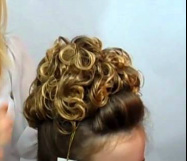Welcome to the world of Irish Dancing, one of the most physically demanding sports out there. I know at first, I had barely any knowledge on what this was all about. So once I got far enough along, I decided to write a guide to help any new beginners.
If you are a current dancer in a different region, comment on my blog any differences you catch. I'll try to edit them into this.
DISCLAIMER: A LOT OF THESE FACTS VARY BY REGION. ALL OF THIS IS BASED IN THE WESTERN REGION US.
NOTE THAT THIS IS STILL A WORK IN PROGRESS. I HAVE NOT COMPLETED OR EDITED THIS GUIDE.
If you are a current dancer in a different region, comment on my blog any differences you catch. I'll try to edit them into this.
DISCLAIMER: A LOT OF THESE FACTS VARY BY REGION. ALL OF THIS IS BASED IN THE WESTERN REGION US.
NOTE THAT THIS IS STILL A WORK IN PROGRESS. I HAVE NOT COMPLETED OR EDITED THIS GUIDE.
The Basics
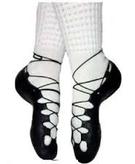
In ballet, your goal is to be expressive with your bodies. You use your arms and feet to convey a story. Not in Irish dance. (at least in solo dances). Here, the goal is to keep your arms, shoulders and head as straight and unmoving as possible. Since we spend no energy on our arms, we can get extreme with our feet. I've had many a classmate look at me while I'm dancing and go "Woah. How do your feet move like that?". Practice.
Dance is a sport for boys and girls, though there are more girls than boys. But boys, don't let that discourage you. Because you're in the minority, the judges pay a lot of attention to you. But it doesn't all come down to your gender. It comes to your technique.
In Irish Dance, there are the basics. You may get them down in your beginner steps, but they are as important, if not more, later on. Especially as steps get more complex, its hard to keep the basics together.
1) Turn Out. Turn your toes out at all times during dance. I had a disadvantage because both of my parents were pigeon-toed. It may not come natural, but its hard to move up if you don't master it.
2) Cross. Keep your knee caps crossed over each other at all times, while keeping your feet turned out. Now dance every step like that.
3) Toes. Stay as high as you can on your toes at all times. If you combine all three of these, your feet should look like the picture to the right. Now dance your whole dance with your feet placed like this.
In Irish Dance, we have two types of shoes, hard shoes and ghillies (gill-ees), which are also called soft shoes. Dancers start out with soft shoes, and after maybe a year or so, they move into hard shoes. Hard shoes are made with fiber glass heels and tips. Ghillies are kind of a black, leather ballet shoe. On some hard shoes for older dancers, there is a flattened end on the front of the shoe. This is for going on toes (on pointe in ballet), and can only be used when a certain age. There are 7 solo dances. Each dance has its own music time signature and type of music. You'll get choreography in each section. But when you start out in feises, you don't have to worry as much about techique. In the grades, you are required to dance 2 steps, on the right and left foot. (exception of the Traditional Set)
REEL
Especially in higher grades, the reel is a powerful dance. It is typically the first dance someone will learn. The reel is a soft shoe dance (danced in ghillies), and one of the two soft shoe dances danced in Championships and Majors.
LIGHT JIG
Light Jig is a soft shoe dance. This dance is not danced in Championship or Majors, but is danced by the grades.
SLIP JIG
The Slip Jig is the other soft shoe dance danced in Championships and Majors. The slip jig is light and floaty. Since boys are powerful dancers, in Championships and Majors, they do not dance the Slip Jig. Some teachers may not have boys dance the Slip Jig in grades.
SINGLE JIG
The Single Jig is the 4th of 4 Soft Shoe Dances. I just recently learned that in some regions, the Single Jig is not taught to kids and is not competed at feises
DOUBLE JIG
The Double Jig is a hard shoe dance. The Double Jig is more commonly called the Treble Jig.
HORNPIPE
The Hornpipe is the another hard shoe dance. Oh...Important Point.
FOR BOTH THE DOUBLE/TREBLE JIG AND HORNPIPE, THERE ARE TWO SPEEDS THAT THEY CAN BE DANCED AT: FAST AND SLOW. IN THE BEGINNER 1 AND 2, IT IS REQUIRED TO DANCE THE FASTER SPEED. At the Novice level, ask your teacher if you dance the Fast or Slow Speed.
TRADITIONAL SET
There are Six Traditional Set Dances. Each one has Its own choreography and music. The steps are universal, so every school around the world does roughly the same steps (there have been minor changes throughout time). The Six Traditional Sets are: St. Patrick's Day, The Blackbird, The Job of Journeywork, The Garden of the Daises, The Jockey to the Fair, and The King of the Faeries. At many a feis, there has been at least one competitor in my competition that can't dance in the Traditional Set, because they couldn't differentiate Traditional Set and regular Set. Unlike the other solo dances, all set dances (Traditional and Non-Traditional) have one step right and left, and the set part, which is only on the right foot and typically is longer than the step.
SET DANCE
The Non-Traditional Set Dance is only danced in Championships and at Majors. Make sure that if you are in grades, you don't confuse a Non-Traditional Set with a Traditional Set. There are many, many sets. Like Traditional Sets, each Non-Traditional Set has a special music. However, they do not have universal choreography.
Dance is a sport for boys and girls, though there are more girls than boys. But boys, don't let that discourage you. Because you're in the minority, the judges pay a lot of attention to you. But it doesn't all come down to your gender. It comes to your technique.
In Irish Dance, there are the basics. You may get them down in your beginner steps, but they are as important, if not more, later on. Especially as steps get more complex, its hard to keep the basics together.
1) Turn Out. Turn your toes out at all times during dance. I had a disadvantage because both of my parents were pigeon-toed. It may not come natural, but its hard to move up if you don't master it.
2) Cross. Keep your knee caps crossed over each other at all times, while keeping your feet turned out. Now dance every step like that.
3) Toes. Stay as high as you can on your toes at all times. If you combine all three of these, your feet should look like the picture to the right. Now dance your whole dance with your feet placed like this.
In Irish Dance, we have two types of shoes, hard shoes and ghillies (gill-ees), which are also called soft shoes. Dancers start out with soft shoes, and after maybe a year or so, they move into hard shoes. Hard shoes are made with fiber glass heels and tips. Ghillies are kind of a black, leather ballet shoe. On some hard shoes for older dancers, there is a flattened end on the front of the shoe. This is for going on toes (on pointe in ballet), and can only be used when a certain age. There are 7 solo dances. Each dance has its own music time signature and type of music. You'll get choreography in each section. But when you start out in feises, you don't have to worry as much about techique. In the grades, you are required to dance 2 steps, on the right and left foot. (exception of the Traditional Set)
REEL
Especially in higher grades, the reel is a powerful dance. It is typically the first dance someone will learn. The reel is a soft shoe dance (danced in ghillies), and one of the two soft shoe dances danced in Championships and Majors.
LIGHT JIG
Light Jig is a soft shoe dance. This dance is not danced in Championship or Majors, but is danced by the grades.
SLIP JIG
The Slip Jig is the other soft shoe dance danced in Championships and Majors. The slip jig is light and floaty. Since boys are powerful dancers, in Championships and Majors, they do not dance the Slip Jig. Some teachers may not have boys dance the Slip Jig in grades.
SINGLE JIG
The Single Jig is the 4th of 4 Soft Shoe Dances. I just recently learned that in some regions, the Single Jig is not taught to kids and is not competed at feises
DOUBLE JIG
The Double Jig is a hard shoe dance. The Double Jig is more commonly called the Treble Jig.
HORNPIPE
The Hornpipe is the another hard shoe dance. Oh...Important Point.
FOR BOTH THE DOUBLE/TREBLE JIG AND HORNPIPE, THERE ARE TWO SPEEDS THAT THEY CAN BE DANCED AT: FAST AND SLOW. IN THE BEGINNER 1 AND 2, IT IS REQUIRED TO DANCE THE FASTER SPEED. At the Novice level, ask your teacher if you dance the Fast or Slow Speed.
TRADITIONAL SET
There are Six Traditional Set Dances. Each one has Its own choreography and music. The steps are universal, so every school around the world does roughly the same steps (there have been minor changes throughout time). The Six Traditional Sets are: St. Patrick's Day, The Blackbird, The Job of Journeywork, The Garden of the Daises, The Jockey to the Fair, and The King of the Faeries. At many a feis, there has been at least one competitor in my competition that can't dance in the Traditional Set, because they couldn't differentiate Traditional Set and regular Set. Unlike the other solo dances, all set dances (Traditional and Non-Traditional) have one step right and left, and the set part, which is only on the right foot and typically is longer than the step.
SET DANCE
The Non-Traditional Set Dance is only danced in Championships and at Majors. Make sure that if you are in grades, you don't confuse a Non-Traditional Set with a Traditional Set. There are many, many sets. Like Traditional Sets, each Non-Traditional Set has a special music. However, they do not have universal choreography.
Starting Feiseanna (fesh-e-ahna)
Don't let that big word scare you! That's the technical term, but most girls I know call them feises (fesh-es). A feis (fesh) is our form of competition.
To register for a feis, there will typically be an online registration forum, At least where I am, that online source would be called Feisworx. Click here to check it out. You should talk with your teacher before signing up for a feis, just so you know what dances to do, and any special instructions for signing up. Note that feisanna are not free. There will be a fee. On the database, there will be a date by which you have to sign up for the feis. If you sign up after this date, there is a late fee that must be payed.
At the beginning of your first feis, you'll need to register at the Registration Desk. Once you sign up (such as through Feisworx), the database you registered through will assign you a competitor number. Registration is where you'll pick that number up. Safety pin that onto your dress and make sure that it will be visible to the judge from stage. On the back of your number is your name, school, and age...wait...that's not my age! Don't worry. Your feis age is based on what year you were born, not date. So your feis age is what age you were on the previous January 1st. So if I'm 13, but my birthday is on March 14th, then my feis age is 12, because on January 1st, I was 12. Also on the back of your number is the competition number, competition, and stage you'll report to for each dance. Everyone starts out in the Beginner 1 or First Feis grade. Some feises don't offer the First Feis category. You'll be asked to dance with one or two other dancers, probably not from your same school. Those one or two other dancers will probably NOT do your same steps. You'll dance in front of one judge, who will rank you at the end of your dance. You dance the dances you learned in your class. You'll dance in the Beginner 1 grade until you qualify to move up into Beginner 2. (see guide below).
When you finish your two steps, point your toe and bow to the judge. You'll walk to the EXACT PLACE YOU WERE in line when you're finished. When every dancer has danced, then wait for the judge to make the last final marks. He/she will ring a little bell (like ones you see in grocery stores to get a clerk's attention), then point and bow to the judge again. When you're in higher grades, mainly Champion grades, you'll also bow to the musician. No need to do that until you reach Prelim.
To register for a feis, there will typically be an online registration forum, At least where I am, that online source would be called Feisworx. Click here to check it out. You should talk with your teacher before signing up for a feis, just so you know what dances to do, and any special instructions for signing up. Note that feisanna are not free. There will be a fee. On the database, there will be a date by which you have to sign up for the feis. If you sign up after this date, there is a late fee that must be payed.
At the beginning of your first feis, you'll need to register at the Registration Desk. Once you sign up (such as through Feisworx), the database you registered through will assign you a competitor number. Registration is where you'll pick that number up. Safety pin that onto your dress and make sure that it will be visible to the judge from stage. On the back of your number is your name, school, and age...wait...that's not my age! Don't worry. Your feis age is based on what year you were born, not date. So your feis age is what age you were on the previous January 1st. So if I'm 13, but my birthday is on March 14th, then my feis age is 12, because on January 1st, I was 12. Also on the back of your number is the competition number, competition, and stage you'll report to for each dance. Everyone starts out in the Beginner 1 or First Feis grade. Some feises don't offer the First Feis category. You'll be asked to dance with one or two other dancers, probably not from your same school. Those one or two other dancers will probably NOT do your same steps. You'll dance in front of one judge, who will rank you at the end of your dance. You dance the dances you learned in your class. You'll dance in the Beginner 1 grade until you qualify to move up into Beginner 2. (see guide below).
When you finish your two steps, point your toe and bow to the judge. You'll walk to the EXACT PLACE YOU WERE in line when you're finished. When every dancer has danced, then wait for the judge to make the last final marks. He/she will ring a little bell (like ones you see in grocery stores to get a clerk's attention), then point and bow to the judge again. When you're in higher grades, mainly Champion grades, you'll also bow to the musician. No need to do that until you reach Prelim.
Grades
At the end of every competition, results will be posted on a wall. Ask around to find out where the wall is. Look for your competition number and competition. Beside the dancers name, is their place in the competition.
Note that some names of grades change according to regions, and SOME QUALIFICATIONS VARY FROM REGION TO REGION
These are all based off of the Western United States Region, which I am based in.
FIRST FEIS
Open only to dancers who have never done a feis before. No place in this qualifies to move up into any other grade. This grade is just for the experience of a feis. Not every feis offers a First Feis category. If it doesn't, then just sign up for Beginner 1.
BEGINNER 1
If you've done First Feis (or your feis doesn't offer a First Feis category), then you move to Beginner 1. If you get 1st, 2nd, or 3rd place in any Beginner 1 dance, then you move into the Beginner 2 grade in that dance.In any grade, if you don't get the place needed to move up to the next grade, then at your next feis, you stay in the same grade. Also, IF ANY COMPETITION HAS LESS THAN 5 DANCERS, THAT COMPETITION DOESN'T COUNT TO MOVE UP INTO THE NEXT GRADE.
BEGINNER 2
After you've gotten 1st, 2nd, or 3rd in Beginner 1, then you move up to Beginner 2. If you get 1st or 2nd place in Beginner 2 , then you move up to the Novice grade.
NOVICE
See the section on dress attire, but in Novice, Solo Dresses are permitted. You are also allowed to do the Slower speed in the Double Jig and Hornpipe (above). You must get a first place in the Novice grade to move into Prizewinner, UNLESS the competition has 10 or more competitors, in which case you can move up with a 1st or a 2nd. For example, let's have a dancer named Jane. Jane places 2nd in a competition with 7 competitors. Jane doesn't move up. The girl who got first moves up. But if Jane got 2nd in a competition with 14 competitors, then Jane would move into prizewinner, because 14 is greater than 10.
PRIZEWINNER
This is the final grade. The qualifications to move out of this grade are a little bit different.
Remember how I said that Reel, Slip Jig, Double/Treble Jig, and Hornpipe are the four dances that are danced in Championship? That is important now. You need 1 win in one of these soft shoes (Reel or Slip Jig) AND a hard shoe (Double Jig or Hornpipe). So, if a dancer wins the Prizewinner Reel, that dancer still has to dance in the Prizewinner grade, and cannot move into the Preliminary Championship until that dancer wins either the Double Jig or the Hornpipe. Or if a dancer wins the Hornpipe, then she also has to win Prizewinner Reel or Slip Jig. Some schools have tougher requirements, so ask your teacher if you have any questions.
Note that some names of grades change according to regions, and SOME QUALIFICATIONS VARY FROM REGION TO REGION
These are all based off of the Western United States Region, which I am based in.
FIRST FEIS
Open only to dancers who have never done a feis before. No place in this qualifies to move up into any other grade. This grade is just for the experience of a feis. Not every feis offers a First Feis category. If it doesn't, then just sign up for Beginner 1.
BEGINNER 1
If you've done First Feis (or your feis doesn't offer a First Feis category), then you move to Beginner 1. If you get 1st, 2nd, or 3rd place in any Beginner 1 dance, then you move into the Beginner 2 grade in that dance.In any grade, if you don't get the place needed to move up to the next grade, then at your next feis, you stay in the same grade. Also, IF ANY COMPETITION HAS LESS THAN 5 DANCERS, THAT COMPETITION DOESN'T COUNT TO MOVE UP INTO THE NEXT GRADE.
BEGINNER 2
After you've gotten 1st, 2nd, or 3rd in Beginner 1, then you move up to Beginner 2. If you get 1st or 2nd place in Beginner 2 , then you move up to the Novice grade.
NOVICE
See the section on dress attire, but in Novice, Solo Dresses are permitted. You are also allowed to do the Slower speed in the Double Jig and Hornpipe (above). You must get a first place in the Novice grade to move into Prizewinner, UNLESS the competition has 10 or more competitors, in which case you can move up with a 1st or a 2nd. For example, let's have a dancer named Jane. Jane places 2nd in a competition with 7 competitors. Jane doesn't move up. The girl who got first moves up. But if Jane got 2nd in a competition with 14 competitors, then Jane would move into prizewinner, because 14 is greater than 10.
PRIZEWINNER
This is the final grade. The qualifications to move out of this grade are a little bit different.
Remember how I said that Reel, Slip Jig, Double/Treble Jig, and Hornpipe are the four dances that are danced in Championship? That is important now. You need 1 win in one of these soft shoes (Reel or Slip Jig) AND a hard shoe (Double Jig or Hornpipe). So, if a dancer wins the Prizewinner Reel, that dancer still has to dance in the Prizewinner grade, and cannot move into the Preliminary Championship until that dancer wins either the Double Jig or the Hornpipe. Or if a dancer wins the Hornpipe, then she also has to win Prizewinner Reel or Slip Jig. Some schools have tougher requirements, so ask your teacher if you have any questions.
Championships
After you get two wins and into Championship, things change a little. One of the biggest is the layout of the rounds. Lets start with the basic layout of an average competition.
ROUND 1: HARD SHOE DOUBLE JIG OR HORNPIPE
Usually danced with 2 other competitors. As opposed to the 2 steps in grade, you have to dance 3 steps.
ROUND 2: SOFT SHOE. REEL OR SLIP JIG
Usually danced with 1 other dancer. Once again, dance 3 steps.
ROUND 3: SET.
Danced by yourself. Especially in Prelim, many feises won't have this round. Look at description of a set up above. If you are U9 or younger, then you typically are required to do a Traditional Set.
Wait, did she say "Prelim" up there? What's that mean?
PRELIMINARY CHAMPIONSHIP
Or Prelim for short. After you've won two of your Prizewinner dances, this is where you go. Results are much different now. Now, your main score is the combined score of every round from every judge. This is the score that counts. You will also get a score for each of your rounds, but its only from one of your judges. That's confusing. Example: Judge 1, 2 ,and 3 are judging Judy's hard shoe dance. Judge 1 gives her 4th, Judge 2 gives her 1st, and Judge 3 gives her 5th. Only one of the judge's scores in her hard shoe round are posted and are eligible to get awards for. Let's just say that Judge 3 is randomly chosen. So Judy's posted score is 5th place, because Jude 3 gave her 5th. Anyways, in order to move out of prelim, you need to get two wins overall. That's two 1st places in a competition with 5 or more. Then you move into Open.
OPEN CHAMPIONSHIP
Or Open for short. The buck stops here. This is the highest grade possible. If you move into Open by a certain date, then you automatically are eligible for the North American Nationals. Speaking of Nationals, Lets talk Majors.
ROUND 1: HARD SHOE DOUBLE JIG OR HORNPIPE
Usually danced with 2 other competitors. As opposed to the 2 steps in grade, you have to dance 3 steps.
ROUND 2: SOFT SHOE. REEL OR SLIP JIG
Usually danced with 1 other dancer. Once again, dance 3 steps.
ROUND 3: SET.
Danced by yourself. Especially in Prelim, many feises won't have this round. Look at description of a set up above. If you are U9 or younger, then you typically are required to do a Traditional Set.
Wait, did she say "Prelim" up there? What's that mean?
PRELIMINARY CHAMPIONSHIP
Or Prelim for short. After you've won two of your Prizewinner dances, this is where you go. Results are much different now. Now, your main score is the combined score of every round from every judge. This is the score that counts. You will also get a score for each of your rounds, but its only from one of your judges. That's confusing. Example: Judge 1, 2 ,and 3 are judging Judy's hard shoe dance. Judge 1 gives her 4th, Judge 2 gives her 1st, and Judge 3 gives her 5th. Only one of the judge's scores in her hard shoe round are posted and are eligible to get awards for. Let's just say that Judge 3 is randomly chosen. So Judy's posted score is 5th place, because Jude 3 gave her 5th. Anyways, in order to move out of prelim, you need to get two wins overall. That's two 1st places in a competition with 5 or more. Then you move into Open.
OPEN CHAMPIONSHIP
Or Open for short. The buck stops here. This is the highest grade possible. If you move into Open by a certain date, then you automatically are eligible for the North American Nationals. Speaking of Nationals, Lets talk Majors.
Majors
Your first Major is always exciting. Typically, one's first major would be their regional Oireachtas. (or-ahk-tas). This is only open to dancers in that region (for example, Western Region Oireachtas is only open to Western Region Dancers) It would have the same layout as a Championship Competition, except boys and girls are separated. Another difference is that you have no choice over what dances you do. If you are in the age group U10 or older, then it alternates by year what dances you do. If you're a girl, one year, you'll dance the Reel and Hornpipe. The next it'll be Slip Jig and Double Jig, the next Reel and Hornpipe, and so on. (Reel and Hornpipe are always paired, and Slip Jig and Double Jig are too) If you're a boy, since you don't dance the Slip Jig, only your hard shoe alternates. You'll dance your Reel every year. If you're a guy, one year you'll dance the Reel and Double Jig, the next you'll dance the Reel and Hornpipe, then Reel and Double Jig.
If you're younger than U10, then you'll always dance Reel and Double Jig until you reach U10. No matter if you're a girl or a guy.
Another difference between Champs and Majors; you only get to dance your set round if you recall.
"What's recall?"
Recalling means that in your first 2 rounds, you got into the top 50% of your group or higher. So lets take my group this past year for example.
There were 100 dancers on the dot. So 50 of them recalled. That 50 danced their set. So the awards were awarded to everyone who got 50th or above. I was slightly lucky because I got 50th.
Awards are handed out at night, after all dancing is done. The top 10 will be called out first, and will be asked to stand behind the podium while everyone else gets awarded. The winner of that competition will be invited to the Parade of Champions that night. The Parade of Champions takes the winner of every age group, boys and girls, and lets them perform one of their steps in front of an audience.
Unlike at a Championship, there are two ways to do the judging layout.
1) A panel of 5 judges will judge every round. These judges will not change throughout rounds.
2) A panel of 3 judges. But these judges will change every time you dance. So over all three rounds, you'll have 9 judges.
If you're younger than U10, then you'll always dance Reel and Double Jig until you reach U10. No matter if you're a girl or a guy.
Another difference between Champs and Majors; you only get to dance your set round if you recall.
"What's recall?"
Recalling means that in your first 2 rounds, you got into the top 50% of your group or higher. So lets take my group this past year for example.
There were 100 dancers on the dot. So 50 of them recalled. That 50 danced their set. So the awards were awarded to everyone who got 50th or above. I was slightly lucky because I got 50th.
Awards are handed out at night, after all dancing is done. The top 10 will be called out first, and will be asked to stand behind the podium while everyone else gets awarded. The winner of that competition will be invited to the Parade of Champions that night. The Parade of Champions takes the winner of every age group, boys and girls, and lets them perform one of their steps in front of an audience.
Unlike at a Championship, there are two ways to do the judging layout.
1) A panel of 5 judges will judge every round. These judges will not change throughout rounds.
2) A panel of 3 judges. But these judges will change every time you dance. So over all three rounds, you'll have 9 judges.
Qualifying for A Major
OIREACHTAS
There are no set requirements for dancing at the regional Oireachtas, but your teacher may have a few guidelines.
NORTH AMERICAN NATIONALS
-If you're in Open
-If you are in U8 or U9, a teacher can chose to send you to Nationals.But its the teacher's decision, not yours.
- At Oireachtas, take 25% of the dancers in your competition. Take that number and add 10 (the top 10 dancers automatically qualify) and that is the number of dancers eligible to go to Nationals. Like in my competition, 100 dancers. 25% of a 100 is 25. 25 plus 10 equals 35. 35 dancers qualified in my age group.
WORLDS (OIREACHTAS RINCE NA CRUINNE)
This one's tricky.
From Oireachtas or Nationals-
-5 competitors qualify in any group that has 20 dancers or less. So the top 5 placers go to worlds automatically, no matter how many dancers are in the competition.
-1 for every ten or part of ten after that. So if 5 go automatically with a group of 20 dancers (or less) then with a group of 30 dancers, 6 go. With 40, 7 go. But if there are 47, then 8 go, because 47 contains 7, which is a "part of ten" in.
-Dancers that are World Medal Holders (Not Recall Medal. ) are not counted as qualifiers. So the top seven dancers at Oireachtas are dancers A,B,C,D, E, F, and G. Let's say that there were 19 competitors in the competition. Since 5 recall in that case, competitors A,B,C,D,and E should go to Worlds. But lets say that competitor B has recalled at worlds and is a WMH (World Medal Holder). Getting a World Medal means that you are automatically invited to Worlds the next year. Since competitor B is a WMH, she technically passes down her qualification. So now the qualifiers are competitors A, (no B) C, D, E, and F. And if competitors B and E are WMH's, the qualification is A, (no B) C, D, (no E), F, and G.
I don't understand the math behind it, so I can't explain who exactly a WMH is. Its someone who places fairly high, usually the cutoff in the 15th -22nd place range, at World's the previous year. Contrary to what I thought before, not every Recalled Dancer at Worlds is a World Medal Holder. They are Recall Medal Holders, and the rule above doesn't apply to them.
If you live outside of North America, I don't know your qualifications to get to any major. Sorry.
There are no set requirements for dancing at the regional Oireachtas, but your teacher may have a few guidelines.
NORTH AMERICAN NATIONALS
-If you're in Open
-If you are in U8 or U9, a teacher can chose to send you to Nationals.But its the teacher's decision, not yours.
- At Oireachtas, take 25% of the dancers in your competition. Take that number and add 10 (the top 10 dancers automatically qualify) and that is the number of dancers eligible to go to Nationals. Like in my competition, 100 dancers. 25% of a 100 is 25. 25 plus 10 equals 35. 35 dancers qualified in my age group.
WORLDS (OIREACHTAS RINCE NA CRUINNE)
This one's tricky.
From Oireachtas or Nationals-
-5 competitors qualify in any group that has 20 dancers or less. So the top 5 placers go to worlds automatically, no matter how many dancers are in the competition.
-1 for every ten or part of ten after that. So if 5 go automatically with a group of 20 dancers (or less) then with a group of 30 dancers, 6 go. With 40, 7 go. But if there are 47, then 8 go, because 47 contains 7, which is a "part of ten" in.
-Dancers that are World Medal Holders (Not Recall Medal. ) are not counted as qualifiers. So the top seven dancers at Oireachtas are dancers A,B,C,D, E, F, and G. Let's say that there were 19 competitors in the competition. Since 5 recall in that case, competitors A,B,C,D,and E should go to Worlds. But lets say that competitor B has recalled at worlds and is a WMH (World Medal Holder). Getting a World Medal means that you are automatically invited to Worlds the next year. Since competitor B is a WMH, she technically passes down her qualification. So now the qualifiers are competitors A, (no B) C, D, E, and F. And if competitors B and E are WMH's, the qualification is A, (no B) C, D, (no E), F, and G.
I don't understand the math behind it, so I can't explain who exactly a WMH is. Its someone who places fairly high, usually the cutoff in the 15th -22nd place range, at World's the previous year. Contrary to what I thought before, not every Recalled Dancer at Worlds is a World Medal Holder. They are Recall Medal Holders, and the rule above doesn't apply to them.
If you live outside of North America, I don't know your qualifications to get to any major. Sorry.
Team Dancing
This whole time, I've been talking about individual, solo dancing. Sure that's a good bulk of Irish Step Dance, but teams are also a huge part. Also called Figure Dancing,There are a few kinds of team dances. Two Hands, Three Hands, Four Hands, Six Hands Ceilis, and Figure Choreography.
Don't let the names fool you. Two Hands are danced with two people, not with one person (as the name may suggest). Four hands are danced with 4 people. So on and so on. All Figures are danced with ghillies.
TWO HANDS AND THREE HANDS
These two dances are mainly danced in the grades. Two Hands and Three Hands are danced to either a Reel or a Light Jig. They are also either danced classified as a Champion Figure or a Beginner Figure. You don't have to be a Champion Dancer to Dance in the Champion FIgure and vice versa. Mostly, for the first few times you dance a figure, you'll be in the Beginner Figures. After a bit, your teacher may switch you over.
FOUR HANDS, SIX HANDS, AND CEILIS
Four Hands, Six Hands, and Ceilis are the Traditional Sets of the Figure Dancing World. They each have set music, and set choreography. Four Hands and Six Hands are often only danced at local feisanna, while Ceilis are danced at Majors. Ceilis are Eight hands, danced with eight people.
Fun Fact About Ceilis
Ceilis (as I said above) have set choreography and music. But when competed at Worlds, some things change up a little bit. There are two different endings for a Ceili, which are interchangeable. Typically, only the 1st of the two endings are danced. But at Worlds, they will randomly pick which ending you will do. So you don't know which ending you will do until a little bit before you dance. But if you are going to Worlds with a Ceili, you will learn both.alternate endings.
FIGURE CHOREOGRAPHY
Figure Choreography is the team dance with the most people in it. This figure can have anywhere from 12 to 16 dancers in it. Figure dances have no set choreography or music.
Figure Choreography is the closet we get to interpretive dance in Irish dance. Every choreography has a story on which the dance is based on. This story is read while the dancers walk on stage. Figure Choreography has to be clear and precise. But note that every dancer has to be on spot for the overall performance to look good,
There are three age groups:
Minor (U12 at Oireachtas and U13 at Nationals and Worlds)
Junior (U15 at Oireachtas, and U16 at Nationals and Worlds)
Senior (15&O at Oireachtas, and 16&O at Nationals and Worlds)
Occasionally, there will be a Sub-Minor Age Group, which is U10 at Oireachtas and U11 at Nationals and Worlds.
You can be younger than the given age to be on a team, but not older.
If there are only girls on a Figure, then its called a Girls figure. If there are one or more boys, then its called a Mixed Figure. I've never seen or heard of an all boys figure.
Oh, and...
DANCE DRAMA
Like Figure Choreography, Dance Drama is danced to a story. But dancers can go off and on stage, wear hard or soft shoes, have sets, and wear costumes other than team costumes (see the Attire Section). Its technically not considered a Figure Dance though. As far as I know, there is no limit to the number of people you can have dancing. There is also only one age group.
Don't let the names fool you. Two Hands are danced with two people, not with one person (as the name may suggest). Four hands are danced with 4 people. So on and so on. All Figures are danced with ghillies.
TWO HANDS AND THREE HANDS
These two dances are mainly danced in the grades. Two Hands and Three Hands are danced to either a Reel or a Light Jig. They are also either danced classified as a Champion Figure or a Beginner Figure. You don't have to be a Champion Dancer to Dance in the Champion FIgure and vice versa. Mostly, for the first few times you dance a figure, you'll be in the Beginner Figures. After a bit, your teacher may switch you over.
FOUR HANDS, SIX HANDS, AND CEILIS
Four Hands, Six Hands, and Ceilis are the Traditional Sets of the Figure Dancing World. They each have set music, and set choreography. Four Hands and Six Hands are often only danced at local feisanna, while Ceilis are danced at Majors. Ceilis are Eight hands, danced with eight people.
Fun Fact About Ceilis
Ceilis (as I said above) have set choreography and music. But when competed at Worlds, some things change up a little bit. There are two different endings for a Ceili, which are interchangeable. Typically, only the 1st of the two endings are danced. But at Worlds, they will randomly pick which ending you will do. So you don't know which ending you will do until a little bit before you dance. But if you are going to Worlds with a Ceili, you will learn both.alternate endings.
FIGURE CHOREOGRAPHY
Figure Choreography is the team dance with the most people in it. This figure can have anywhere from 12 to 16 dancers in it. Figure dances have no set choreography or music.
Figure Choreography is the closet we get to interpretive dance in Irish dance. Every choreography has a story on which the dance is based on. This story is read while the dancers walk on stage. Figure Choreography has to be clear and precise. But note that every dancer has to be on spot for the overall performance to look good,
There are three age groups:
Minor (U12 at Oireachtas and U13 at Nationals and Worlds)
Junior (U15 at Oireachtas, and U16 at Nationals and Worlds)
Senior (15&O at Oireachtas, and 16&O at Nationals and Worlds)
Occasionally, there will be a Sub-Minor Age Group, which is U10 at Oireachtas and U11 at Nationals and Worlds.
You can be younger than the given age to be on a team, but not older.
If there are only girls on a Figure, then its called a Girls figure. If there are one or more boys, then its called a Mixed Figure. I've never seen or heard of an all boys figure.
Oh, and...
DANCE DRAMA
Like Figure Choreography, Dance Drama is danced to a story. But dancers can go off and on stage, wear hard or soft shoes, have sets, and wear costumes other than team costumes (see the Attire Section). Its technically not considered a Figure Dance though. As far as I know, there is no limit to the number of people you can have dancing. There is also only one age group.
Attire
If you've ever gone to a feis or seen Irish dance, you've seen the wigs. You've seen the bling. You've seen the tanner. Here are a few guidelines on your attire for Irish Step dance.
Team/School Dresses
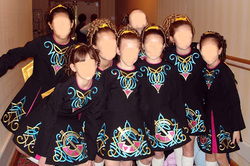
Worn for First Feis, Beginner 1 and 2, and All Figures, team dresses are unanimous across your dance school. They are typically more traditional than a solo dress, but not in all cases.
Some schools require you to wear your school dress throughout Novice and/or Prizewinner. But by rules, you must wear your school dress through Beginner Two. But once you are in Novice, you can start get the....
Some schools require you to wear your school dress throughout Novice and/or Prizewinner. But by rules, you must wear your school dress through Beginner Two. But once you are in Novice, you can start get the....
Solo Dress
|
Solo dresses are one of the coolest things (in my opinion) of Irish dance. Irish solo dresses vary from traditional, more like a school dress, to World level, champion dresses. No two solo dresses are the same.
There are famous dress designers, styles, and sadly, as you get into more champion style dresses, a larger price tag. The point of a solo dress is to be noticed by judges on stage. Dresses can be any color or design you want. All dresses, like team dresses, have long sleeves and mid-thigh length skirt. Traditional Dresses typically Tri-Panel, which means that they have three parts to make the skirt. One in the center, and two on the sides. Higher level dresses change in look according to style. They usually are very bold and have lots of sparkle. Rhinestones are commonly used to make Irish dance dresses sparkly. There can be thousands on a Champion dress. Now you might remember that I said that dresses can be expensive. If you get a new dress from a large name in dance, it can be roughly $3,000 dollars. But if you get a used dress, it can be a lot more affordable. Go to one of these sites to see and/or buy used dresses:http://www.dance-again.com/ http://getthatdress.com/ |
|
Important Rules For Dresses
All Rules are by the An Coimisuin Le Rince Gaelacha
-Skirts must be at mid-tigh length or longer.
-Necklines must be higher than the collarbone
-No cut-outs. There must be a full front, side, and back to the dress.
-No feathers may be used on the dress, because they can fall off and land on the stage. If a dancer steps on one, it can be really dangerous.
-Dance drama costumes must be kept with the theme of the story.
-You must wear school dress through Beginner 2
-Sleeves must start at the shoulder line and end at the cuff (mid-palmish)
-You can't have any pictures of a globe on your dress. Since this is the symbol for Worlds, this is considered almost bragging. Its not allowed.
-Like the previous rule, no identification of any awards that you've gotten is legal to depict on your dress.
-On a solo dress, you can not have any identification of your dance school at all.
-STARTING JANUARY 1st, 2015, you cannot have your initials or name on your dress.
-Necklines must be higher than the collarbone
-No cut-outs. There must be a full front, side, and back to the dress.
-No feathers may be used on the dress, because they can fall off and land on the stage. If a dancer steps on one, it can be really dangerous.
-Dance drama costumes must be kept with the theme of the story.
-You must wear school dress through Beginner 2
-Sleeves must start at the shoulder line and end at the cuff (mid-palmish)
-You can't have any pictures of a globe on your dress. Since this is the symbol for Worlds, this is considered almost bragging. Its not allowed.
-Like the previous rule, no identification of any awards that you've gotten is legal to depict on your dress.
-On a solo dress, you can not have any identification of your dance school at all.
-STARTING JANUARY 1st, 2015, you cannot have your initials or name on your dress.
Makeup
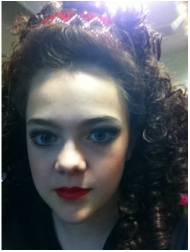
Outside of the dance world, the makeup that champions use would be called stage makeup. Our goal is to be noticed by the judge, and not get washed out by bright stage lights. But in the Novice and Prizewinner grades, you can wear makeup, but you don't have to apply it as heavily.
Some of you might be thinking, What about the first two grades? Well, as stated in Rule 4.5.1 by the ACLRG: No dancer in the first two grades (Beginner 1 and 2) cannot wear makeup until they reach U13.
There's another catch. No matter what grade you're in, if you are U10 or younger, no makeup is permitted on you.
To not get washed out by btight stage lights, you need to look a little overdone. This photo is an example. (Because of the lighting you can't see the blush) There are no restrictions on the type of makeup that you wear. A lot of my friends also apply fake eyelashes (I don't, but that's a personal preference).
I guess I should also mention fake tanner in here.
Champions and dancers at Majors often wear some form of fake tanner. Once again, another thing so our legs don't get washed out. Some (like me) use spray tanner, while others use lotions. At Majors, there will often be a tanning booth if you don't feel comfortable doing it yourself. This may be one of the more infamous of the Irish dancer's traits, and I tried to stay away from it, but it really helps your legs stand out on stage.
Some of you might be thinking, What about the first two grades? Well, as stated in Rule 4.5.1 by the ACLRG: No dancer in the first two grades (Beginner 1 and 2) cannot wear makeup until they reach U13.
There's another catch. No matter what grade you're in, if you are U10 or younger, no makeup is permitted on you.
To not get washed out by btight stage lights, you need to look a little overdone. This photo is an example. (Because of the lighting you can't see the blush) There are no restrictions on the type of makeup that you wear. A lot of my friends also apply fake eyelashes (I don't, but that's a personal preference).
I guess I should also mention fake tanner in here.
Champions and dancers at Majors often wear some form of fake tanner. Once again, another thing so our legs don't get washed out. Some (like me) use spray tanner, while others use lotions. At Majors, there will often be a tanning booth if you don't feel comfortable doing it yourself. This may be one of the more infamous of the Irish dancer's traits, and I tried to stay away from it, but it really helps your legs stand out on stage.
Other Stuff
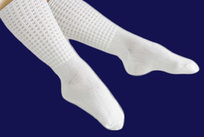
Before you make the mistake, don't wear just your underwear underneath your dress. Irish dancers wear Kickpants (a.k.a knickers, bloomers) underneath their dresses, so when a dancer kicks up, the judges don't have to see white with red hearts. Kickpants are usually the same color as your dress, and often come with purchase.
SOCKS
Girl Irish dancers wear poodle socks for socks. Poodle socks are all white, with a normal sock around the foot, and a more woven, bumpy top above. Some poodle socks come with tiny rhinestones on them. These are for competition. Others can be multi-colored or tie-dye. These are for practice, NOT COMPETITION.
SOCKS
Girl Irish dancers wear poodle socks for socks. Poodle socks are all white, with a normal sock around the foot, and a more woven, bumpy top above. Some poodle socks come with tiny rhinestones on them. These are for competition. Others can be multi-colored or tie-dye. These are for practice, NOT COMPETITION.
Wigs
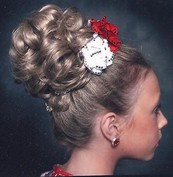
Deep breath. Okay. Here we go. Wigs. If you've seen dancing, you've seen them. At some point, I'll try to post a video of how to put on a wig. For now, let's just talk about different types of wigs.
BUN COVERS
The Bun Cover is smaller than the full size wig, and a lot easier to handle. Hence the name, a bun cover is typically pinned around a bun on the top or side of the dancer's head. You definitely see quite a few champions in these. As I said, it can be worn on the top of the head, or on the side.
BUN COVERS
The Bun Cover is smaller than the full size wig, and a lot easier to handle. Hence the name, a bun cover is typically pinned around a bun on the top or side of the dancer's head. You definitely see quite a few champions in these. As I said, it can be worn on the top of the head, or on the side.
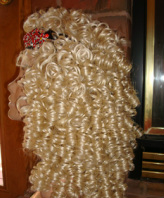
FULL WIG
Back when Irish dancing didn't have fake tanner and sparkle, people would take the time to curl their hair. Problem? To get it curly enough, it took days. With the wig? It maybe takes 15 or 20 minutes. Although some can be heavy (go with looser curls for lighter weight), they definitely have a ton of stage presence.
Back when Irish dancing didn't have fake tanner and sparkle, people would take the time to curl their hair. Problem? To get it curly enough, it took days. With the wig? It maybe takes 15 or 20 minutes. Although some can be heavy (go with looser curls for lighter weight), they definitely have a ton of stage presence.
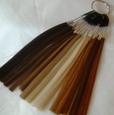
When picking a wig, there will typically be a ring with strands of the colors avalible attached to it.Make sure to get into bright light, then match the color appropriately. In the words of my teacher, "When in doubt, go darker." So if you're in between two colors, go for the darker one. Why? Because there are many products to darken your hair, but not as many to lighten it. So if you accidentally get too dark, you can easily darken your hair.
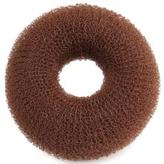
MATERIALS NEEDED TO PUT ON A WIG or A BUN COVER
Hairspray
Lots and lots and lots and lots of bobby pins.
Elastics to tie the hair up
Little tiny rubber bands (like ones used for Rainbow Loom)
Dounut(s) Donut--->
If needed, Hair darkener.
